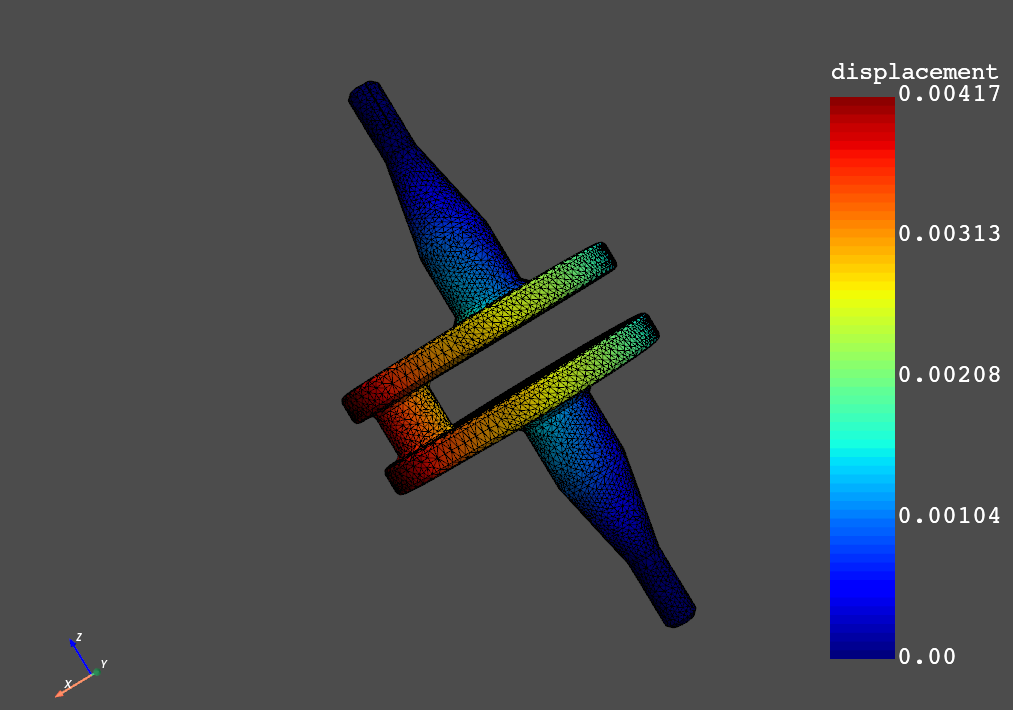Getting started#
The Data Processing Framework (DPF) provides numerical simulation users and engineers with a toolbox for accessing and transforming simulation data. DPF can access data from Ansys solver result files as well as from several neutral file formats. For more information, see PyDPF-Core.
This workflow-based framework allows you to perform complex preprocessing and postprocessing operations on large amounts of simulation data.
PyDPF-Core is a Python client API communicating with a DPF Server, either through the network using gRPC or directly in the same process.
Install DPF Server#
To use PyDPF-Core, you need access to a DPF Server.
DPF Server is packaged within the Ansys installer in Ansys 2021 R1 and later. To use it, download the standard installation using your preferred distribution channel, and install Ansys following the installer instructions. For information on getting a licensed copy of Ansys, visit the Ansys website.
DPF Server pre-releases are also available as standalone packages (independent of the Ansys installer) on the DPF Pre-Release page of the Ansys Customer Portal. As explained in Licensing, the standalone DPF Server is still protected by an Ansys license mechanism and requires accepting the DPF Preview License Agreement. Once you have access to an Ansys license, follow the guidelines to install a standalone DPF Server.
For more information regarding installing, managing, and running DPF servers, see DPF Server.
Install PyDPF-Core#
To install PyDPF-Core, in a Python environment, run this command:
pip install ansys-dpf-core
Be sure to check the compatibility guidelines to know if your DPF Server version is compatible with the latest version of PyDPF-Core.
For more installation options, see Installation section.
Use PyDPF-Core#
To use PyDPF-Core, in the same Python environment, run this command:
from ansys.dpf import core as dpf
from ansys.dpf.core import examples
model = dpf.Model(examples.download_crankshaft())
print(model)
DPF Model
------------------------------
Static analysis
Unit system: MKS: m, kg, N, s, V, A, degC
Physics Type: Mechanical
Available results:
- displacement: Nodal Displacement
- velocity: Nodal Velocity
- acceleration: Nodal Acceleration
- reaction_force: Nodal Force
- stress: ElementalNodal Stress
- elemental_volume: Elemental Volume
- stiffness_matrix_energy: Elemental Energy-stiffness matrix
- artificial_hourglass_energy: Elemental Hourglass Energy
- thermal_dissipation_energy: Elemental thermal dissipation energy
- kinetic_energy: Elemental Kinetic Energy
- co_energy: Elemental co-energy
- incremental_energy: Elemental incremental energy
- elastic_strain: ElementalNodal Strain
- structural_temperature: ElementalNodal Temperature
------------------------------
DPF Meshed Region:
69762 nodes
39315 elements
Unit: m
With solid (3D) elements
------------------------------
DPF Time/Freq Support:
Number of sets: 3
Cumulative Time (s) LoadStep Substep
1 1.000000 1 1
2 2.000000 1 2
3 3.000000 1 3
over_time_disp = model.results.displacement().eval()
over_time_disp[0].plot()


